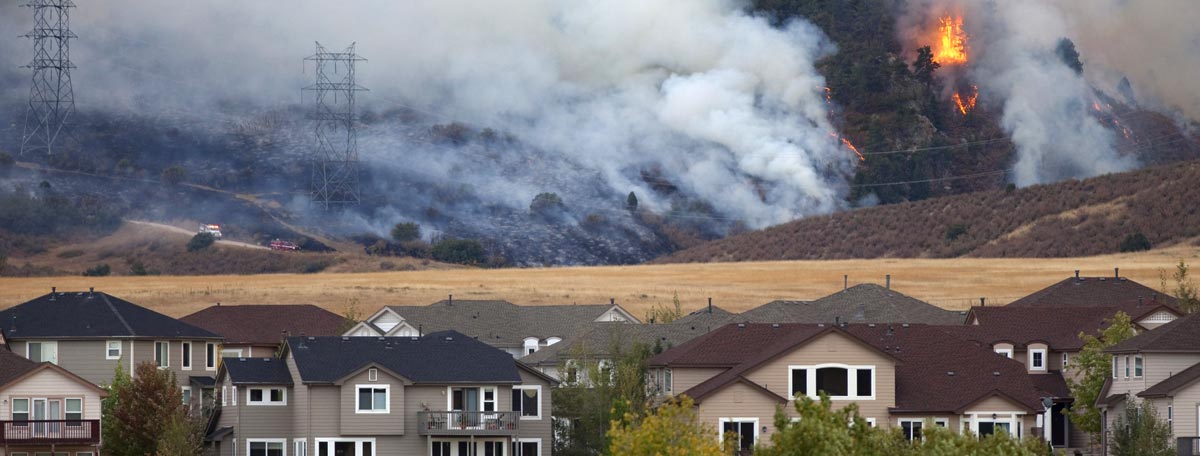
Wildfires are a natural part of Colorado’s forest, but the threat of wildfire and how to respond to it can be daunting. If you live in the wildland-urban interface in Colorado, where homes and other structures intermingle with wildland vegetation, you are at risk of wildfire.
Firefighters always do their best to reduce fire damage, but it is ultimately up to you to protect your home for wildfire. According to the National Fire Protection Association, research around home destruction vs. home survival in wildfires point to embers and small flames as the main way that the majority of homes ignite in wildfires. Embers are burning pieces of airborne wood and/or vegetation that can be carried more than a mile through the wind. They can cause spot fires and ignite homes, debris and other objects.
Most homes ignite due to the condition of the home and everything around it, up to 200′ from the foundation, called the Home Ignition Zone.
As you address the home ignition zone on your property, always start with the home or structure and work outwards. Hardening homes and landscapes to be more fire-resistant will reduce your risk of loss.
Planning ahead and taking action can increase the likelihood your home survives when a wildfire occurs. In this comprehensive video, Teller County Extension Director Mark Platten discusses specific wildfire risks to homes and how to mitigate them, including:

